#old kingdom egypt
Text

figure of a squatting frog, Late Predynastic Egypt (Naqada IIb-III) or 1st Dynasty (c. 3300-2900 BCE), green and brown granite
currently in the collection of the British Museum, accession no. EA54372
#isaac.txt#art#archaeology#egyptology#old kingdom egypt#predynastic egypt#egyptian archaeology#naqada#frog
60 notes
·
View notes
Text
I was just listening to a podcast about this and I thought it was quite interesting! And it's a fairly "recent" find!
#AncientEgypt#history#archaeology#ancient history#egypt#egyptian history#The Buried Pyramid#Pyramid of Sekhemkhet#arts and culture#unfinished step pyramid#Third Dynasty#Egyptology#Sekhemkhet Djoserty#Old Kingdom Egypt#Early Dynastic Period#step pyramid#Zakaria Goneim#Unas complex#saqqara
0 notes
Text

Tomb Wall Fragment Depicting Donkeys
Egyptian, Old Kingdom, Dynasty 5 (about 2504–2347 BCE)
This fragment is part of a scene of donkeys being driven over grain to separate wheat from chaff- one that was used in many Egyptian tombs. The tomb’s owner selected the decoration for his or her tomb chamber from a selection of established themes, much as one might select wallpaper today.
624 notes
·
View notes
Text

~ Bundle of Hair Extensions.
Date: ca. 2114-1502 B.C.
Period: Old Kingdom-early New Kingdom; 16th-18th Dynasty
Medium: Human hair, linen
▪︎ From the source: These hair extensions would have been placed in a tomb for use in the afterlife. In this world, Egyptians used extensions to make their wigs or natural hair thicker and more attractive, just as people do today. The reliefs in this case show hairdressers adding extensions like these to the hair or wig of Queen Neferu.
#ancient#ancient art#history#museum#archeology#ancient egypt#ancient history#archaeology#egyptian#egyptology#egypt#bundle of hair extensions#extensions#fake hair#queen tiye#old kingdom#new kingdom#16th Dynasty#18th dynasty#human hair#ca. 2114 b.c.#ca. 1502 b.c.
2K notes
·
View notes
Text
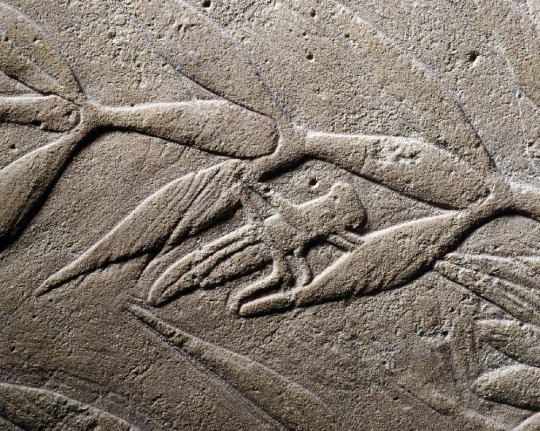
I feel we all need to see the 1,5 cm tall grasshopper from the mastaba tomb of Hetepherakhet again
734 notes
·
View notes
Text
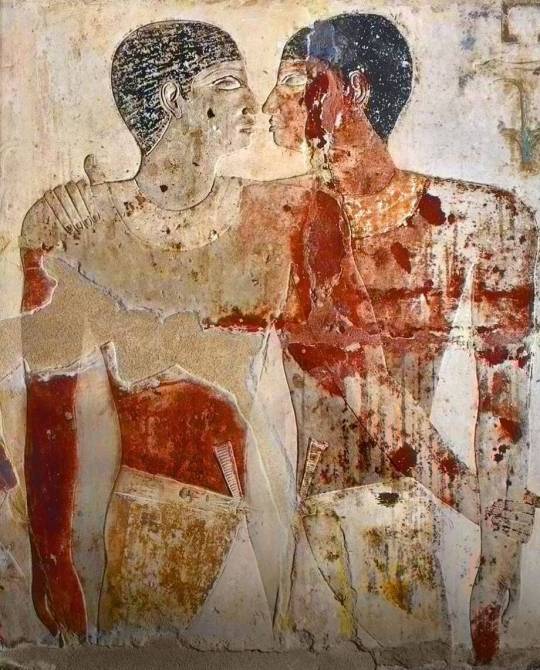
Relief depicting Khnumhotep and Niankhkhnum
Old Kingdom, 5th Dynasty, ca. 2498-2345 BC.
Saqqara necropolis.
319 notes
·
View notes
Text

I love her your honor
#I gotta look up outfit stuff for her#she's getting a mix of modern and Old Kingdom fashion#anyway here's my mafia boss#strawberry moon#studio#wip#listening to The Prince of Egypt soundtrack and it got me hyped
87 notes
·
View notes
Text
an average standing next to me performance in 25th century BC

this is a depiction of Niankhkhnum and Khnumhotep, two egyptian men who served under the sixth pharaoh of the fifth dynasty with the title of 'overseer of the manicurists' from their tomb in saqqara, egypt. they are thought to be the oldest depiction of a gay couple in ancient history by some scholars- they were buried together, called 'royal confidants' and shown in poses usually common from married het couples. others, of course, said they were just bros
75 notes
·
View notes
Text
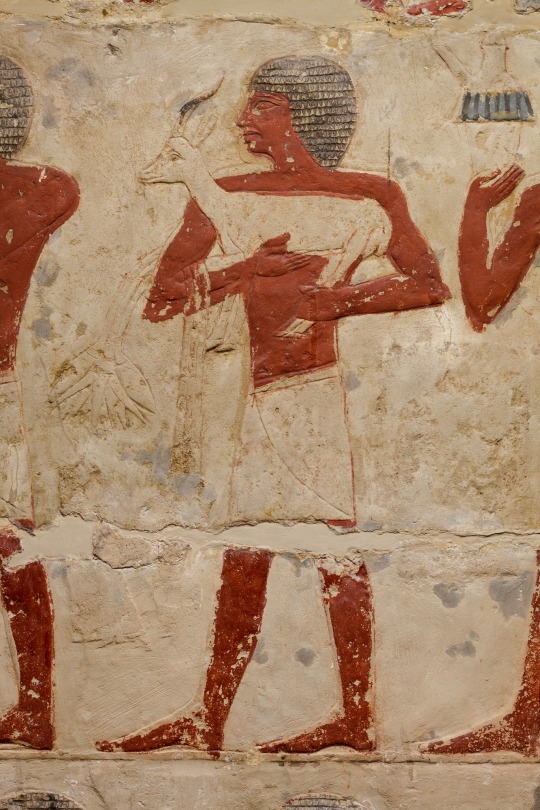
A man brings a gazelle as an offering to the palace administrator Perneb. Scene (painted limestone) from Perneb's tomb at Saqqara, dating to ca. 2381-2323 BCE (5th Dynasty, Old Kingdom). Purchased from the Egyptian government in 1913 and now in the Metropolitan Museum of Art, NYC.
#art#art history#ancient art#Egypt#Ancient Egypt#Egyptian art#Ancient Egyptian art#5th Dynasty#Fifth Dynasty#Old Kingdom#tomb painting#Saqqara#Metropolitan Museum of Art
229 notes
·
View notes
Photo

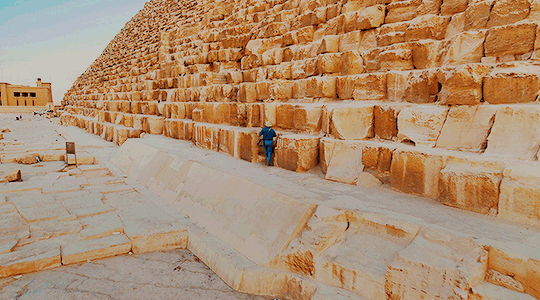
Great Pyramid of Giza: to the bottom center can be seen the original smooth white limestone which would have originally completely covered the inner darker stepped blocks. The inner blocks were quarried in the Giza area while the while higher quality limestone was quarried up river at Tura and had to be transported via the Nile to the pyramid’s location.
#egypt#ancient egypt#egyptology#archaeology#historyedit#mine#my edit#giza#pyramid#the great pyramid#pyramid of khufu#khufu#old kingdom#pyramids
163 notes
·
View notes
Text

False-Door stela of Tjentet
* Giza, Western Cemetery, Mastaba of Tjentet (a royal princess)
* Old Kingdom, 4th-5th Dynasty (2543 - 2305 BCE)
* Hieroglyphs of the stela indicate offerings: "a thousand birds..."
* Limestone
* Egyptian Museum, Turin
Turin, June 2023
86 notes
·
View notes
Text
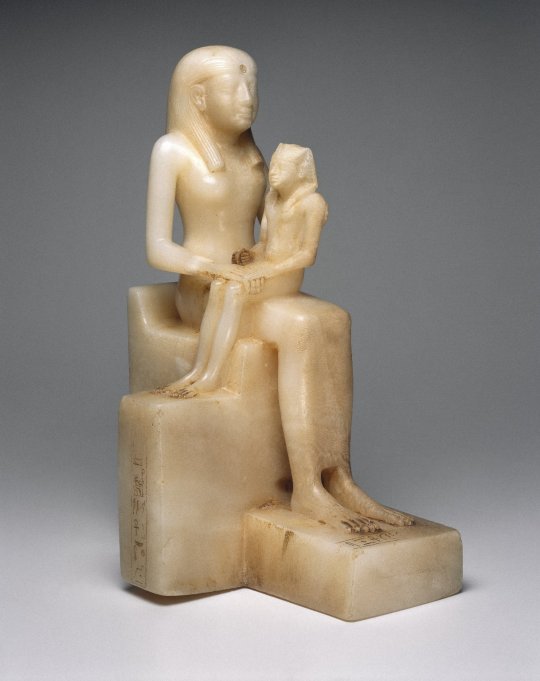
Statue of Queen Anknes-meryre II (Meryreankhne) with Pepy II on her lap (c. Dynasty VI, 2345-2181 BCE); from Upper Egypt; alabaster; each figure has its own hierglyphic inscription
Currently in the collection of the Brooklyn Museum (New York, USA), accession no. 31.119
#isaac.txt#art#archaeology#egypt#egyptian archaeology#egyptology#alabaster#dynasty 6#old kingdom egypt
44 notes
·
View notes
Photo

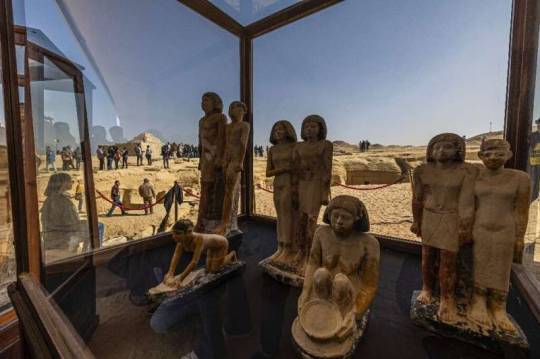

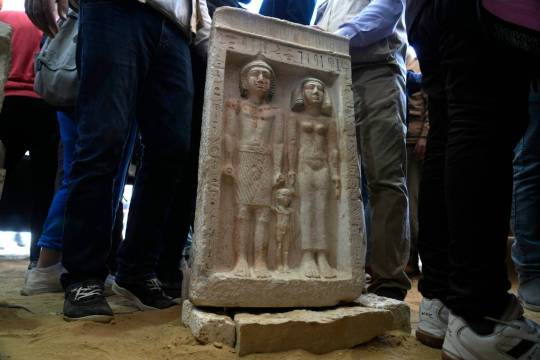
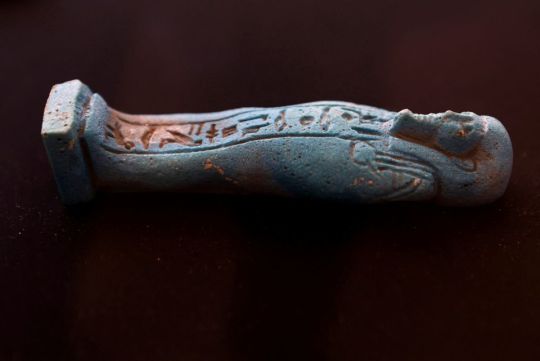



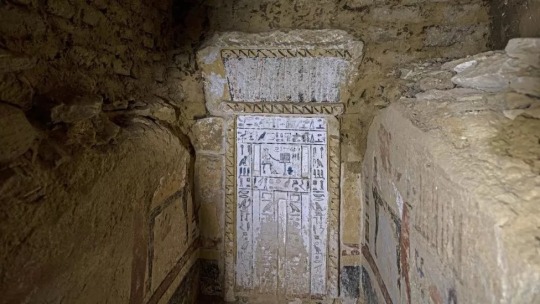
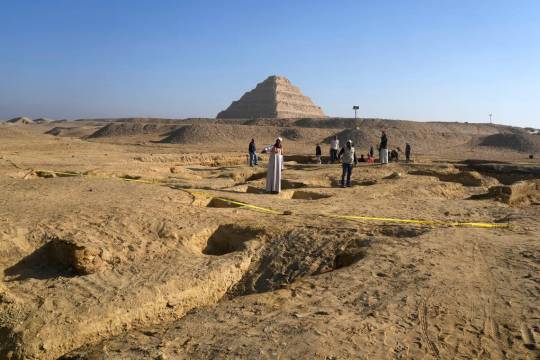
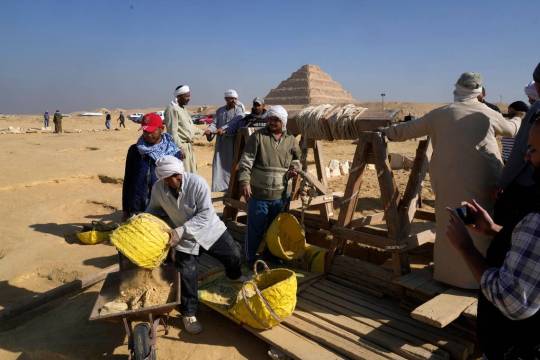

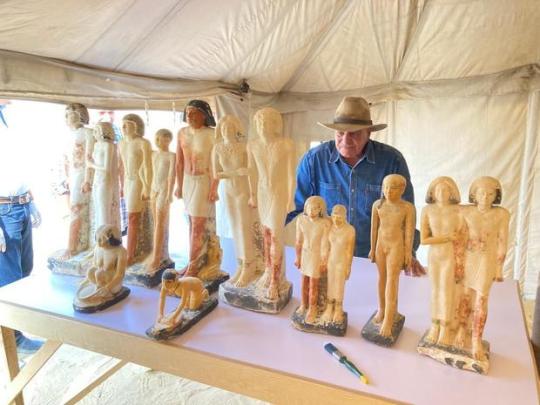
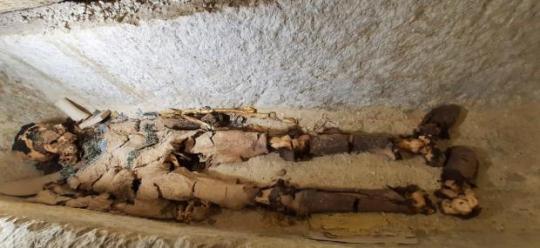
A 4,300-Year-Old Egyptian Gold-Leaf Covered Mummy Discovered in Egypt
Egyptian archaeologists who have spent years meticulously excavating a site amid the ancient ruins of Saqqara, near Cairo, announced a number of major discoveries on Thursday dating to the fifth and sixth dynasties of Egypt's "Old Kingdom," more than 4,000 years ago. One of the most important was a large, rectangular limestone sarcophagus found at the bottom of a vertical shaft about 50 feet deep.
"The sarcophagus was about 45 tons and the lid was about 5 tons," Dr. Zahi Hawass, the director of the Egyptian excavation team at the Gisr el-Mudir site in the ancient city of Saqqara.
The lid was still sealed onto the sarcophagus with mortar, exactly as it had been left there some 4,300 years ago. It took the archaeologists about two hours of careful work to crack it open.
Inside, they found what Hawass said was the oldest non-royal mummy ever discovered in Egypt. It was also the oldest mummy wrapped in gold leaf ever found in the country, he added.
While the ancient Egyptian at the bottom of the deep shaft was no pharaoh, the elaborate sendoff to the afterlife made it clear they were also no commoner. And there was a name, inscribed on top of the sarcophagus: "HqA-Sps," or Hekashepes.
"Of course, he was important. For someone to make a sarcophagus like this, 15 meters under the ground, he should be a very important man," Hawass said.
But while Hekashepes will earn his place in the history books, the gold-wrapped mummy wasn't Hawass' favorite new discovery at Saqqara, which is part of a sprawling necropolis that used to be the capital of ancient Egypt, known as Memphis. The famed Giza Pyramids are nearby, within the UNESCO World Heritage site of Memphis.
Among the items displayed by Hawass, a veteran Egyptian archaeologist, and his team on Thursday were 14 stone statues found in another a shaft, about 33 feet deep, dating back to the "Old Kingdom," or the Age of the Pyramids, between 2700 and 2200 BC — possibly even older than the mummy of Hekashepes.
"These statues are quite unique," Hawass said. "This is the first time in this century that such a large number of statues was found in Saqqara."
"Today's discovery tells us more about art in the Old Kingdom, mummification, and also about the people who worked there," Hawass said. "One of the tombs was for a priest who was in charge of the pyramids complex of King Unas, the last king of the 5th Dynasty."
It has been a week of landmark announcements by Egyptian archaeologists, with another team revealing the discovery of a massive burial ground in the ancient city of Luxor, close to the ruins of a "complete" Roman-era city nearby.
BY AHMED SHAWKAT.
#A 4300-Year-Old Egyptian Gold-Leaf Covered Mummy Discovered in Egypt#Saqqara Egypt#Hekashepes#Old Kingdom#ancient tomb#ancient grave#ancient sarcophagus#ancient artifacts#archeology#archeolgst#history#history news#ancient history#ancient culture#ancient civilizations#ancient egypt#egyptian history#Dr. Zahi Hawass
162 notes
·
View notes
Photo

Kneeling statue of Amenemopetemhat, Late Period, Saite, 664–610 B.C.
Amenemope-em-hat was director of the Singers of the North and Overseer of the Singers of Amenemope. The second title was inherited from his father, whose equally fine statue has recently been discovered at Tanis, where there was a cult of Amenemope, a form of the god Amun. The first title implies wider authority.
Amenemope-em-hat holds before him the cult object of the cow-eared goddess Hathor. The proportions of this figure, its muscularity, and such details as the slanted ridges of the collarbone and the shallow depression down the center of the torso represent a conscious attempt in the Late Period to emulate the classic works of the Old and Middle Kingdoms.
From Egypt; Said to be from Memphite Region, Memphis (Mit Rahina), Ptah Temple,
H. 64.5 × W. 32 × D. 40.5 cm, 101.6 kg (25 3/8 × 12 5/8 × 15 15/16 in., 224 lb.)
#art#design#history#sculpture#late period#singer#style#amemope#tanis#old kingdom#middle kingdom#saite#egypt
131 notes
·
View notes
Text
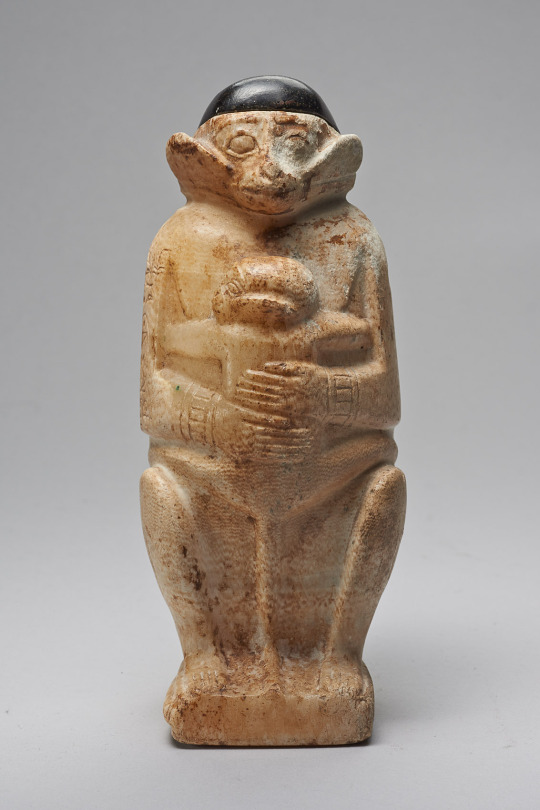

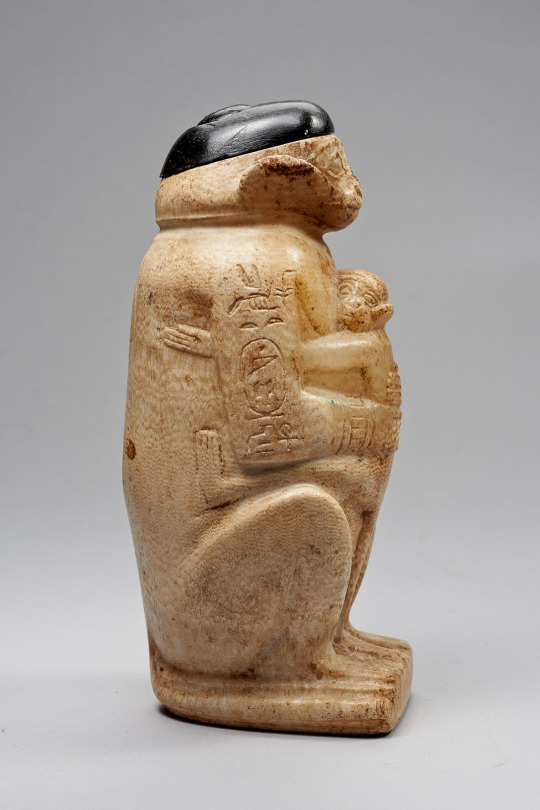
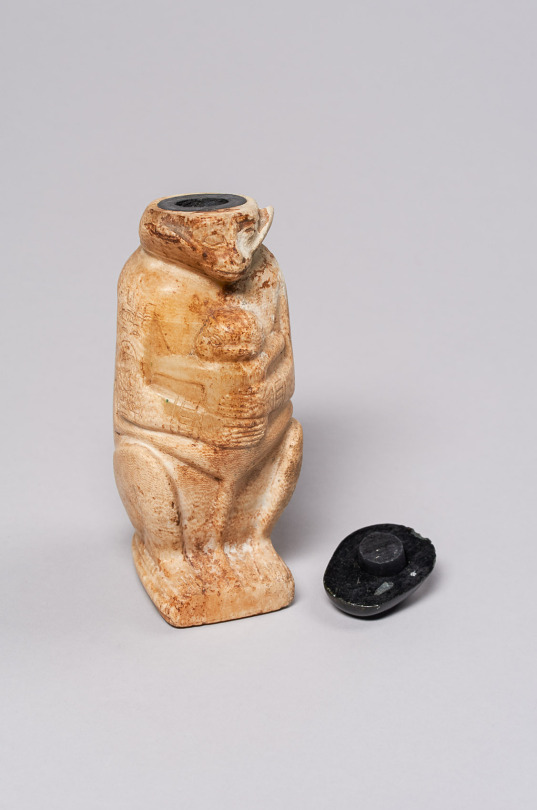

~ Eye makeup container in the shape of a monkey with a cub.
Period: Old Kingdom, 6th Dynasty; reign of Pepi I
Date: ca. 2354-2310 B.C.
Place of origin: Elephantine, Egypt
Medium: Calcite (figure), wood, painted black (lid)
#ancient#ancient art#history#museum#archeology#ancient egypt#ancient sculpture#ancient history#Egyptian#agypt#egyptology#eye makeup#container#monkey#monkey with a cub#6th Dynasty#old kingdom#pepi I#elephantine#ca. 2354 b.c.#ca. 2310 b.c.#calcite
535 notes
·
View notes
Text

Vessel with Lug Handles
Egyptian, Predynastic Period–Old Kingdom (about 4000–2250 BCE)
This jar was carved from very hard stone using a simple drill fitted with a copper tip. The small lug handles allowed for it to be suspended by cords. Vessels like this one were probably used for the storage of ointment or liquids.
15 notes
·
View notes